A Library of Natural Curiosities

Albertus Seba. Cabinet of Natural Curiosities: The Complete Plates in Colour, 1734-1765 (New York: Taschen, 2001). Tomus III, Tabula 107
The natural world has held our fascination for centuries, if not the entirety of human history. In modern times we have people like Sir David Attenborough to dazzle us with the marvels of the natural world in Planet Earth and such series. During the Age of Exploration, on the other hand, it was all about books.
Travel accounts, sketches, and samples collected from exotic locations streamed into Europe throughout the seventeenth through nineteenth centuries, and people went wild for collecting both actual specimens and artistic representations of new species of plants and animals. The following are a few of my favorite facsimiles of important books of natural history in Watson Library that capture a particular sense of wonder people of Europe must have felt during that time, as the range of diversity in the known world expanded so rapidly.
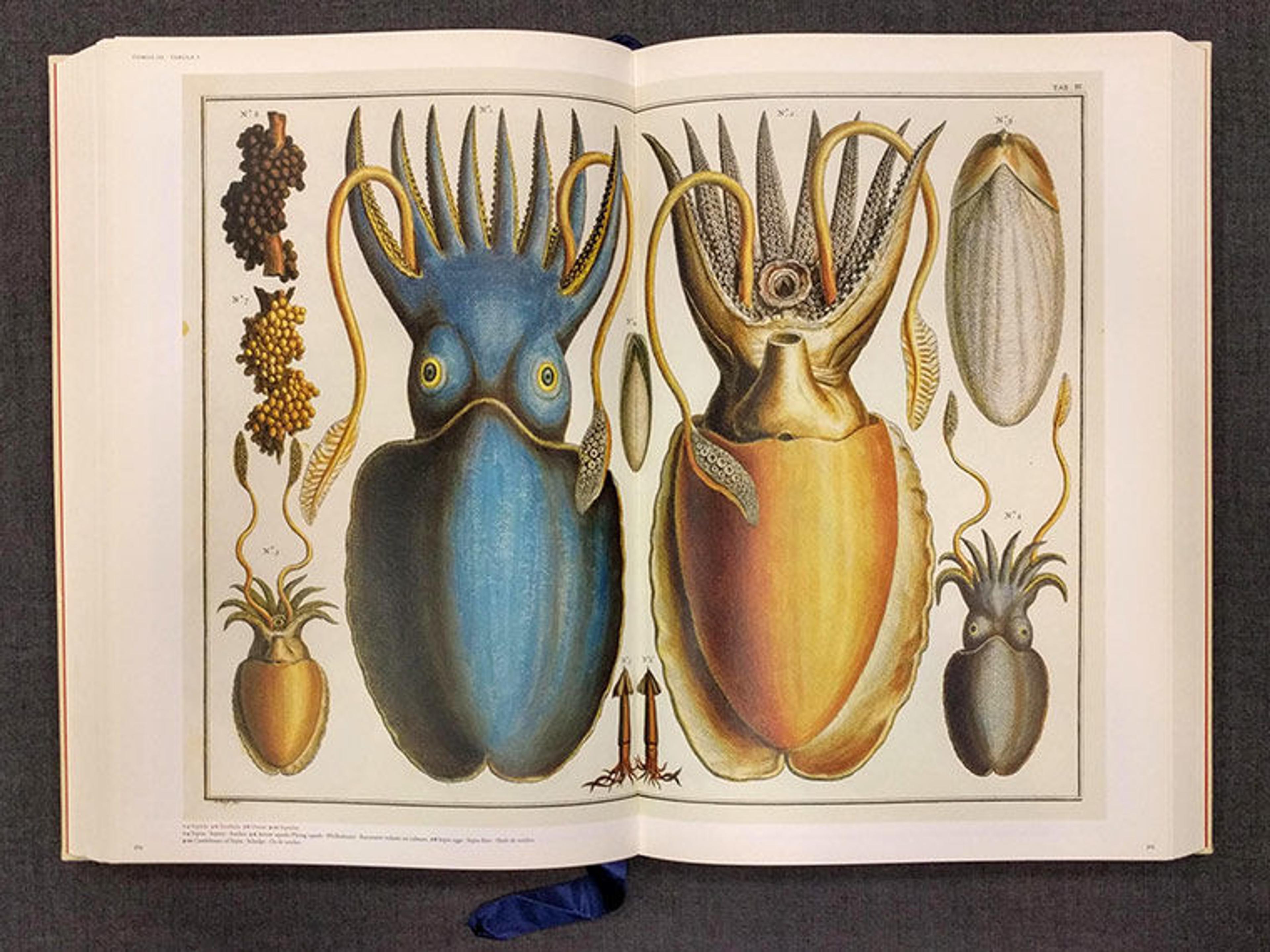
Albertus Seba. Cabinet of Natural Curiosities: The Complete Plates in Colour, 1734–1765 (New York: Taschen, 2001). Tomus III, Tabula 3
Cabinet of Natural Curiosities: The Complete Plates in Colour, 1734–1765 represents the efforts of a single collector based in Amsterdam in the eighteenth century, Albertus Seba. Seba came into contact with natural specimens in his work as an apothecary, and this may be what sparked his interest in the natural world and prompted him to collect far beyond the reaches of what was needed for his profession. Amsterdam's position as a hub of maritime trade situated him perfectly to obtain specimens from around the world.
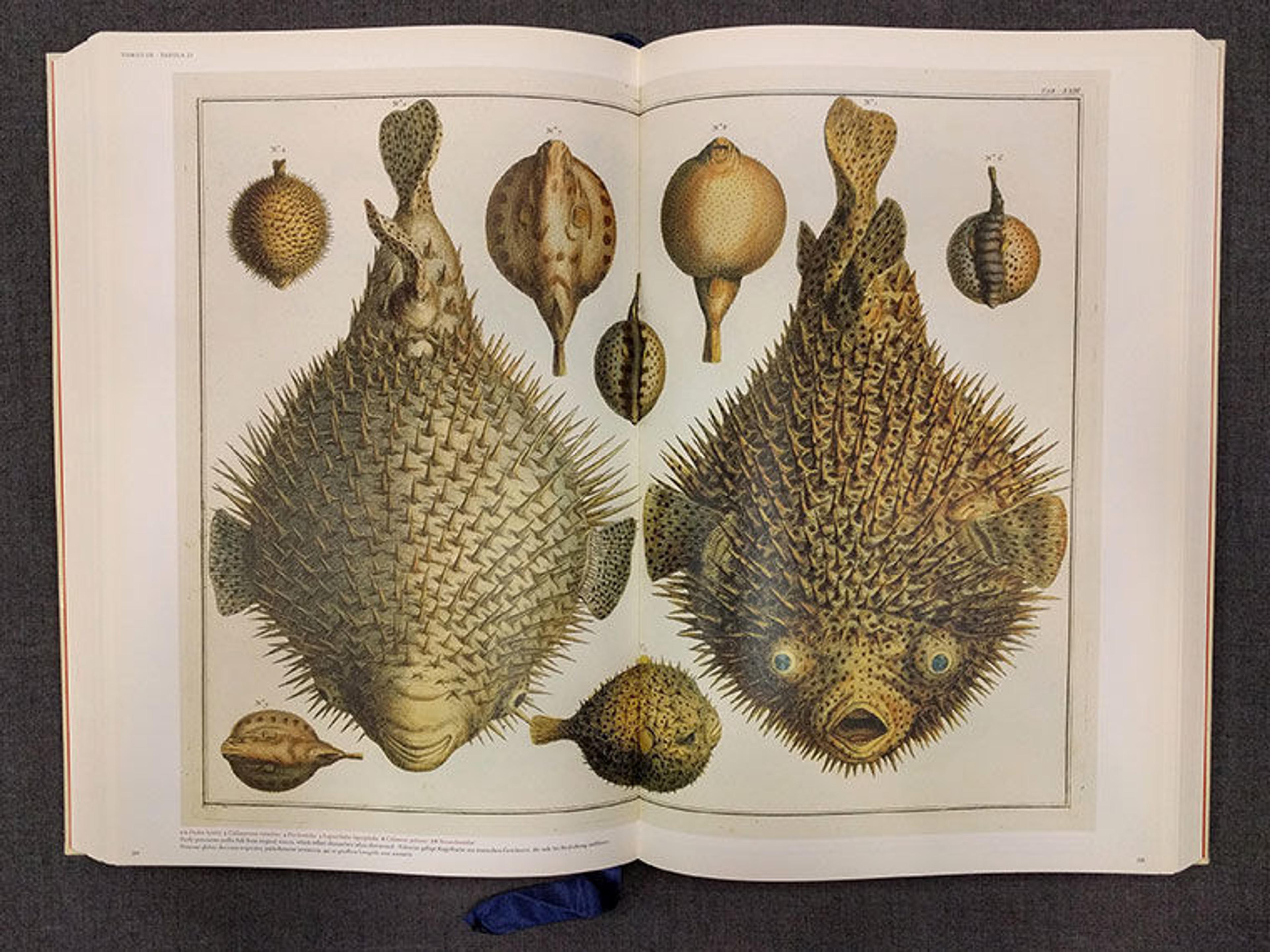
Albertus Seba. Cabinet of Natural Curiosities: The Complete Plates in Colour, 1734–1765 (New York: Taschen, 2001). Tomus III, Tabula 23
The aim for many collectors like Seba was to compile a sampling of specimens from the four corners of the earth that would serve as a microcosm for everything knowable in the natural world. Seba exhibited his collections in a specially designed room in his house and commissioned artists to produce detailed illustrations, to which he added descriptions, published in a four-volume catalogue entitled Loccupletissimi Rereum Thesauri Accurata Descriptio.
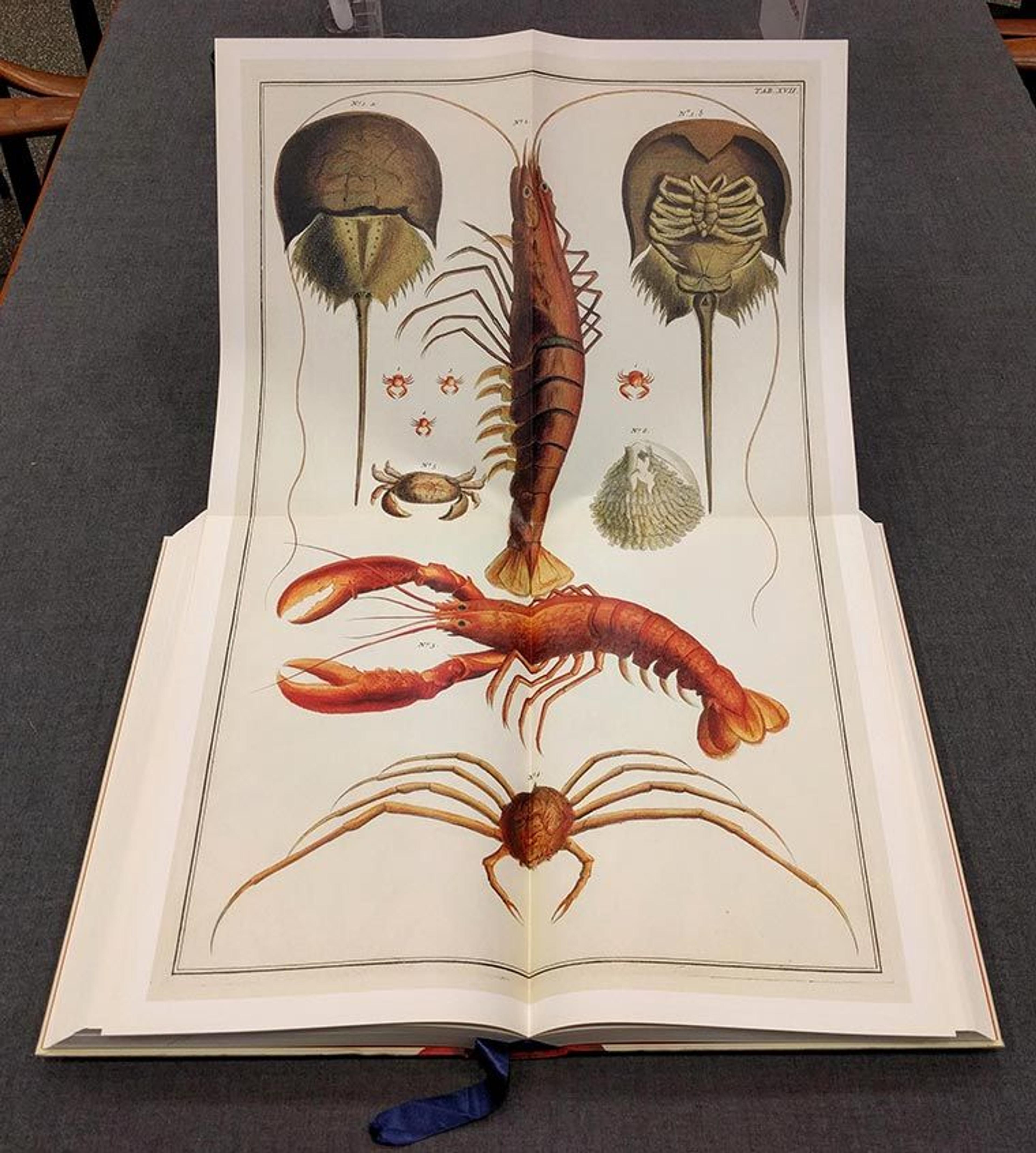
Albertus Seba. Cabinet of Natural Curiosities: The Complete Plates in Colour, 1734–1765 (New York: Taschen, 2001). Tomus III, Tabula 17
In order to complete publication of the final volumes of the work after Seba's death, his heirs were forced to sell the collection at auction, and much of it is now scattered between various natural history museums. Cabinet of Natural Curiosities reproduces the four-volume catalogue of Seba's collection with an introduction in English that adds context and commentary.
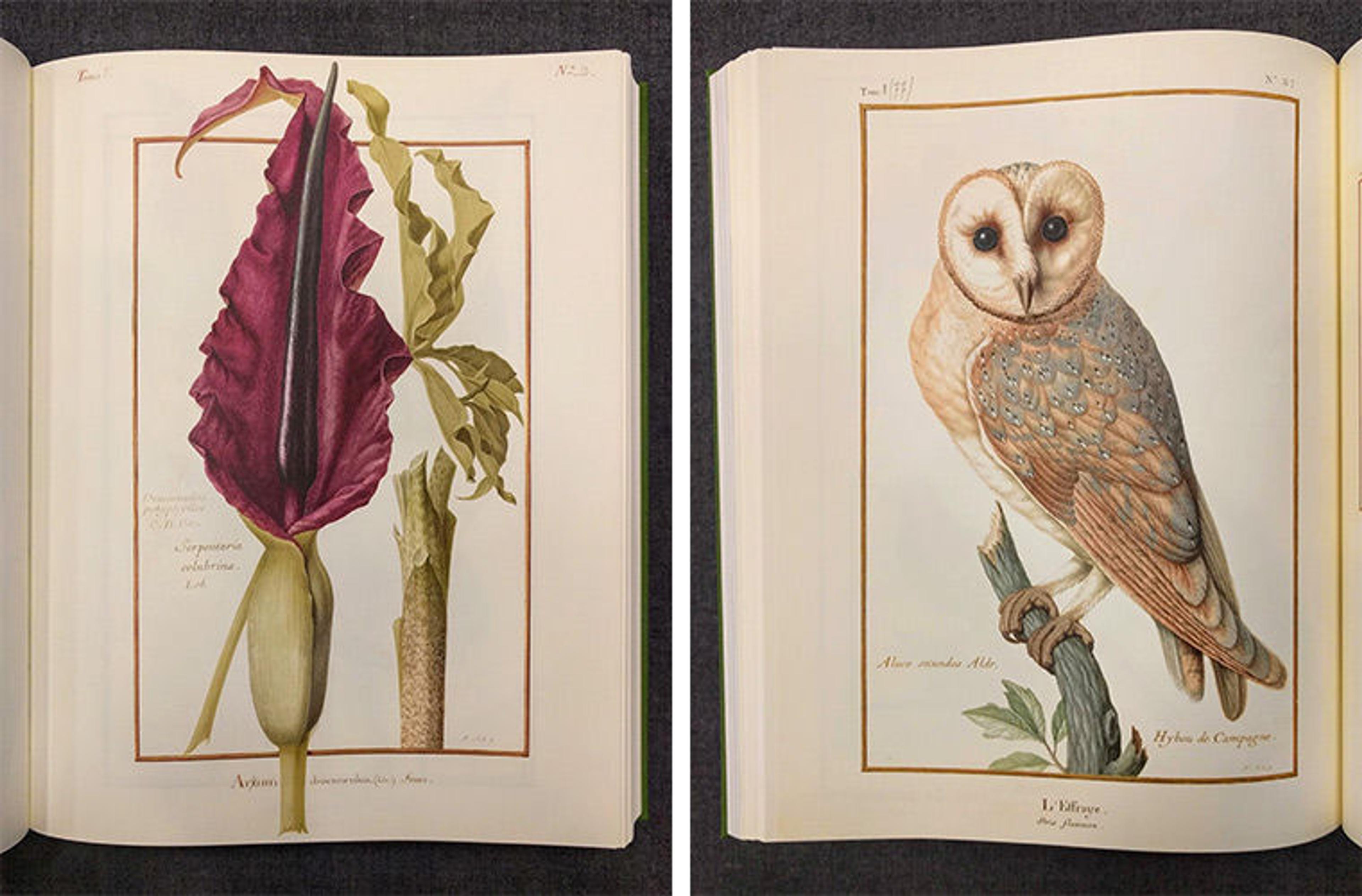
The Art of Natural History: Botanical Illustrations, Ornithological Drawings, and Other Masterpieces from the Age of Exploration, edited by Pascale Heurtel and Michelle Lenoir (New York: Rizzoli, 2018). Left: Nicolas Robert "Dracunculus vulgaris." Vellum, portfolio 5, folio 2. Right: Nicolas Robert, "Tyto Alba." Vellum, portfolio 77, folio 87
The Art of Natural History: Botanical Illustrations, Ornithological Drawings, and Other Masterpieces from the Age of Exploration showcases a collection of naturalist paintings done on vellum from the seventeenth through the mid-nineteenth centuries. Many of these works were part of French royal collections that were gathered in portfolios and housed in the king's library. They were primarily appreciated for their exoticism and aesthetic appeal.

The Art of Natural History: Botanical Illustrations, Ornithological Drawings, and Other Masterpieces from the Age of Exploration, edited by Pascale Heurtel and Michelle Lenoir (New York: Rizzoli, 2018). Left: Nicolas Huet, "Koalas—Phascolarctos cinereus." Vellum, portfolio 71, folio 97. Right: Anonymous, "Amanita muscaria." Vellum, portfolio 1, folio 5
After the French Revolution, these collections were entrusted to the newly founded French Museum of Natural History, at which point the emphasis of the collection shifted to become more scientific. The natural history museum continued to collect in this vein until the early twentieth century, when vellum began to fall out of popularity in favor of paper.
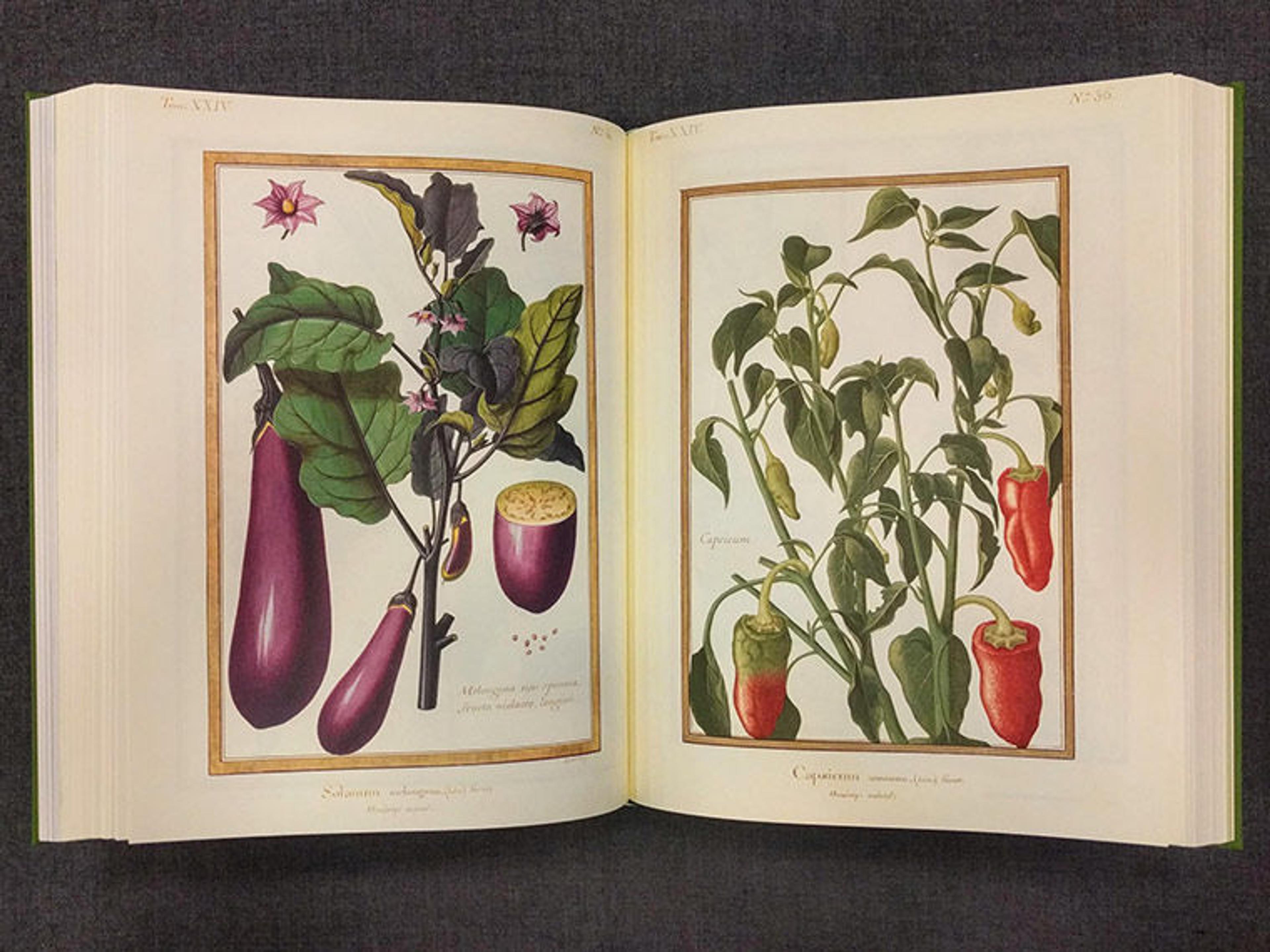
The Art of Natural History: Botanical Illustrations, Ornithological Drawings, and Other Masterpieces from the Age of Exploration, edited by Pascale Heurtel and Michelle Lenoir (New York: Rizzoli, 2018). Left page: Claude Aubriet, "Solanum melongena." Vellum, portfolio 24, folio 4. Right page: Anonymous, "Capsicum annuum." Vellum, portfolio 24, folio 36
Charles Alexandre Lesueur and his collaborator Francis Peron were among those intrepid naturalists who took to the seas to gather samples and document new species. In 1800 the pair joined a scientific expedition to the southern lands aboard the ships Geographe and Naturaliste, on which a team of naturalists recorded hundreds of pages of scientific observation and collected thousands of samples. Lesueur and Peron planned a major publication on their work on jellyfish, but circumstances intervened and the project was never realized. Lesueur later stored his work from the voyage at the Museum of Natural History in Le Havre, where he served as curator, and the collection was mostly forgotten in storage until it was rediscovered in the late twentieth century.
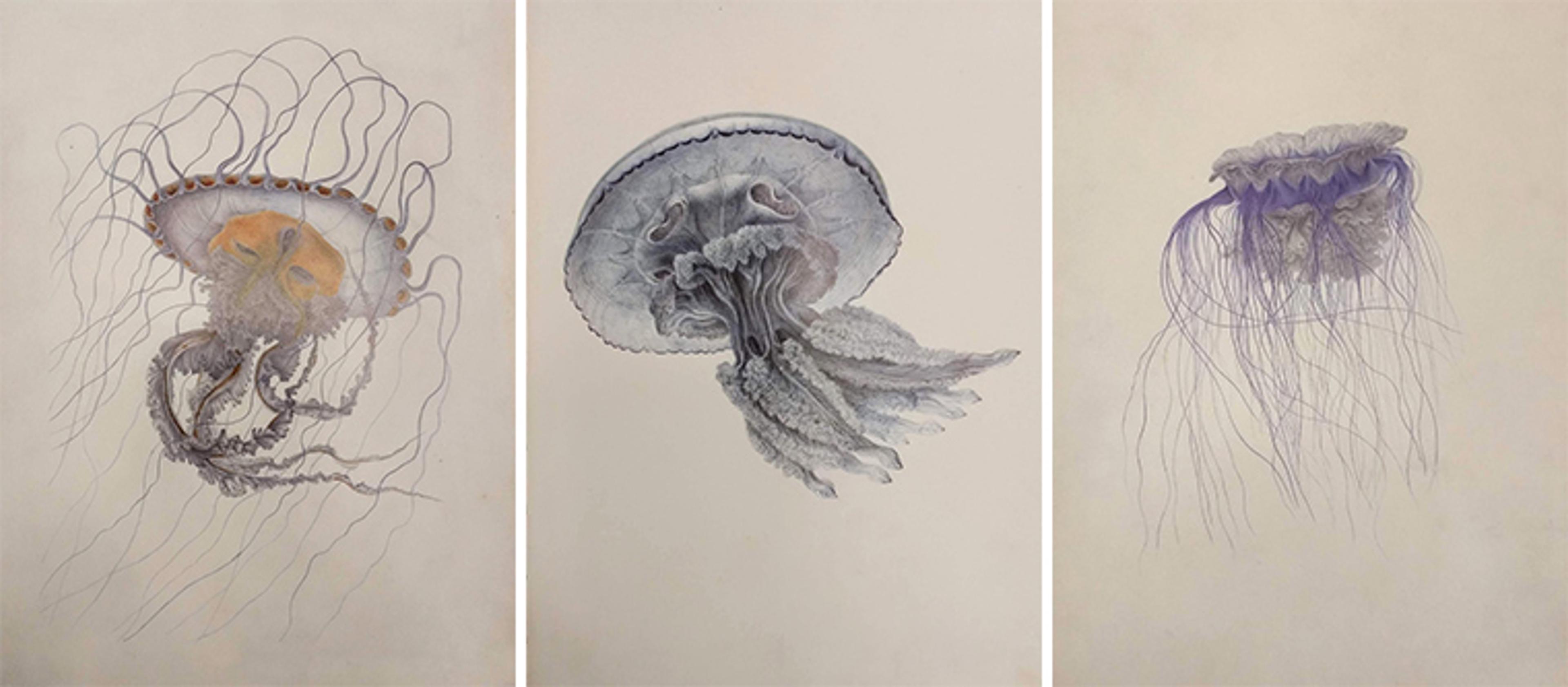
Lesueur, Charles Alexandre. Jellyfish (Paris: MKF editions, 2014). Left: Chrysaora lesueur. Center: Rhizostoma cuvieri. Right: Cyanea lamarcki
Jellyfish were particularly challenging to depict since they would lose shape as soon as they were removed from water, so Lesueur and Peron developed a method of capturing them with a muslin net and gently transferring them to a jar of sea water, which enabled the pair to sketch the jellies from life and make observations about color and luminescence that were impossible to observe in animals that had been preserved. Upon his return to France, Lesueur reworked the drawings on vellum. These paintings have now been collected for the first time in a French-English publication by the Muséum d'Histoire Naturelle du Havre, Méduses (Jellyfish).
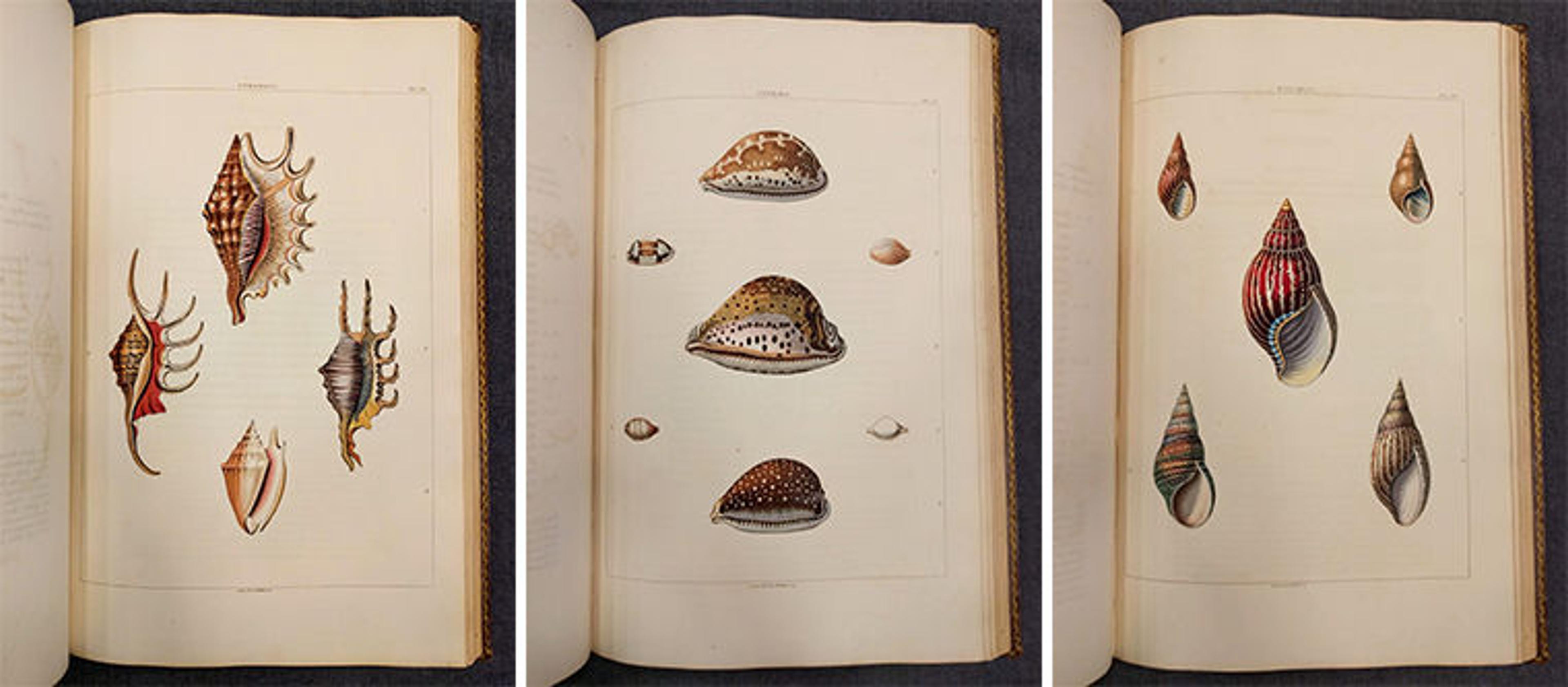
George Perry. Conchology, or the Natural History of Shells: Containing A New Arrangement of the Genera and Species, Illustrated by Coloured Engravings Executed From the Natural Specimens, and Including the Latest Discoveries (London: W. Miller, 1811). Left: Plate 13, Strombus. Center: Plate 3, Cypræa. Right: Plate 30, Bulimus
George Perry published Conchology, or the Natural History of Shells: Containing A New Arrangement of the Genera and Species, Illustrated by Coloured Engravings Executed from the Natural Specimens with the dual aims "to promote the science of Conchology, and to contribute to the improvement of the Fine Arts." This monograph on shells, with sixty-five colored aquatint renderings, proposed a number of new taxonomical arrangements that were heavily criticized in his time, but later came to be accepted; many are still included in modern taxonomical arrangements.
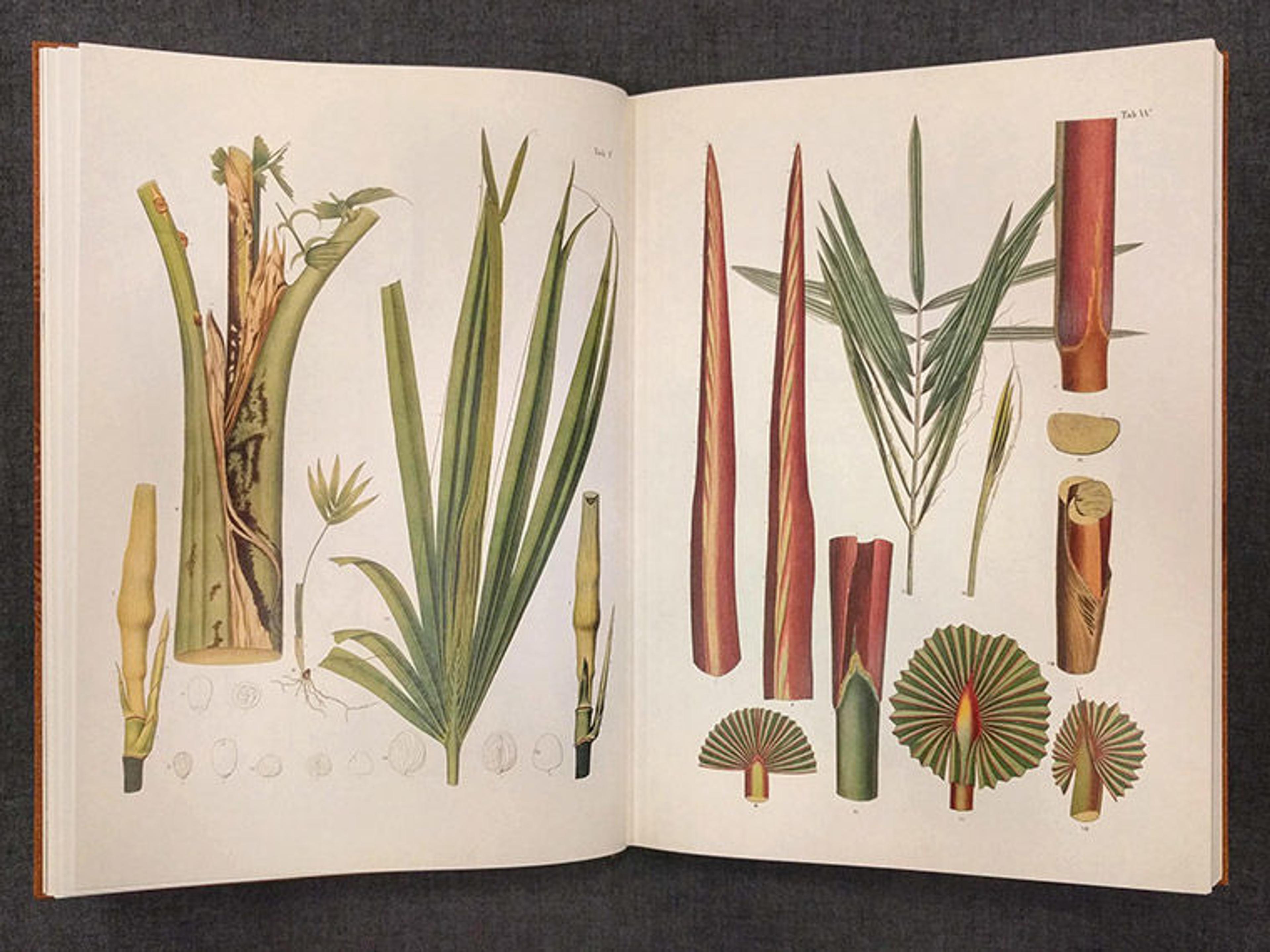
Carl Friedrich Philipp von Martius, The Book of Palms (Köln: Taschen, 2010). Tables V and W
Carl Friedrich Philipp von Martius was an assistant at the Royal Bavarian Academy of Sciences when he joined a team of naturalists sent to Brazil, in 1817, to sketch, collect samples, and record their observations. Martius and another naturalist, Johann Baptist Spix, soon split off from the group to explore independently and, over the next several years, covered an impressive ten thousand kilometers of ground through some of the densest and wildest territory in Brazil. They returned to Munich triumphant, with over ten thousand samples of plants and animals, and Martius was made assistant curator at the Botanical Gardens in Munich.

Carl Friedrich Philipp von Martius, The Book of Palms (Köln: Taschen, 2010). Left: Tables 19 and 20. Right: Tables 118 and 119
Martius's subsequent work on this monograph of palms is particularly noteworthy in that rather than creating a monograph of a single collection, he chose to include all species of palms that were known to him from around the world in an attempt to make the work truly encyclopedic. Historia naturalis palmarum, published in installments between 1823 and 1857, was the first monograph devoted to the study of the palm family and is beautifully reproduced here by Taschen as The Book of Palms.

Carl Friedrich Philipp von Martius, The Book of Palms (Köln: Taschen, 2010). Foldout of Table 125
Daisy Paul
Daisy Paul is an Assistant Museum Librarian in Thomas J. Watson Library.